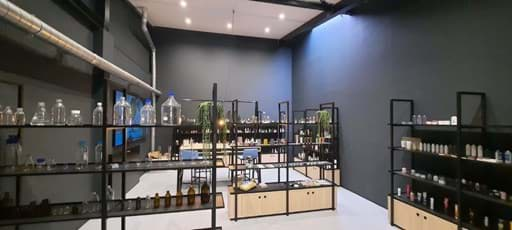
Kosten

Interview mit Paul Muller, Procurement & Contract Manager von APG Europe
Interviewer: Guten Tag, Paul. Wir hören viel über die Bedeutung der Kostenkontrolle in der Industrie. Können Sie uns erzählen, wie APG Europe dies angeht?
Paul Muller: Guten Tag. Natürlich, Kostenkontrolle ist ein entscheidender Aspekt für uns. Wir streben danach, die Betriebskosten so niedrig wie möglich zu halten, indem wir unsere Prozesse effizient organisieren und ausführen. Unser Ansatz umfasst eine One-Stop-Shopping-Philosophie, bei der wir alle operativen Aspekte abdecken, um höchste Qualität bei niedrigen Total Cost of Ownership zu garantieren. Das bedeutet, dass wir nicht nur die Anschaffungskosten betrachten, sondern auch die Nutzungs- und Verbrauchskosten.
Interviewer: Wie integriert APG das AQSCI-Modell in seine Kostenstrategie?
Paul Muller: Das AQSCI-Modell ist umfassend und deckt verschiedene Aspekte ab. Wir konzentrieren uns darauf, unsere Verfügbarkeit, lokale Lagerhaltung und umfangreiche Bestände zu optimieren. Das bedeutet, dass wir Lieferpläne, Abrufverträge und JIT-Lieferungen nutzen und die gesamte Lieferkette überwachen.
Interviewer: Und was die Betriebskosten betrifft, wie geht APG damit um?
Paul Muller: Verfügbarkeit ist in unserer Branche entscheidend. Wir halten Bestände vor, die innerhalb von 24 Stunden für unsere Kunden verfügbar sind. Die Abstimmung der Produktionsbedarfe mit Lieferanten ist eine komplexe Aufgabe und erfordert sorgfältige Planung. Dies tun wir, indem wir die Kundenplanung mit unserer Produktionskapazität abgleichen, und das alles mit niedrigen Betriebskosten dank unseres SAP ERP und der geteilten Dienstleistungen mit Indutrade Benelux.
Interviewer: Betrachtet APG auch die Total Cost of Ownership?
Paul Muller: Absolut. Durch die Optimierung unserer Betriebskosten schaffen wir Spielraum für Kosteneinsparungen, die direkt unseren Kunden zugutekommen. Dazu gehört die Minimierung von Ausfallzeiten in den Produktionslinien und die Sicherstellung der Verfügbarkeit der richtigen Verpackung zur richtigen Zeit. Darüber hinaus umfasst unser Service einen einmaligen Bestellprozess und ein kundenspezifisches Lagerverwaltungssystem, mit dem wir noch effizienter auf die individuellen Bedürfnisse unserer Kunden eingehen können.
Interviewer: Und wie sieht es mit technologischen Integrationen wie EDI und E-Commerce aus?
Paul Muller: Wir nutzen die Möglichkeiten von EDI und E-Commerce voll aus. Diese Technologien bieten uns und unseren Kunden Transparenz und Effizienz im Bestell- und Lieferprozess.
Interviewer: Wie sieht es mit den Change-of-Control-Kosten aus?
Paul Muller: Wir setzen standardisiertes Produktmanagement und eine Harmonisierung unserer Prozesse ein. Das bedeutet, dass alle Änderungen kontrolliert und koordiniert eingeführt werden, um Effizienz und Kostenkontrolle sicherzustellen.
Interviewer: Es scheint, als habe APG diese Optimierungspunkte gut im Griff.
Paul Muller: Das stimmt, wir arbeiten ständig an Verbesserungen und Innovationen. Wir arbeiten nach Industrial Guidance, GMP-systematischem Ansatz und Standardarbeitsanweisungen.
Interviewer: Können Sie uns etwas mehr über Ihre Preisbindungsstrategie erzählen?
Paul Muller: Bei APG verfolgen wir eine jährliche Preisstrategie, bei der wir Forecast- und Indexpreisgestaltung verwenden. Wir bieten sowohl statische als auch dynamische Rabatte an und berücksichtigen natürlich unvorhergesehene Umstände wie höhere Gewalt.
Interviewer: Und zum Schluss, verwendet APG strategische Preisgestaltung?
Paul Muller: Ja, auf jeden Fall. Wir verwenden ein transparentes Activity-Based-Costing-Modell und grenzüberschreitende Unternehmenspreisgestaltung, um den besten Preis und die besten Bedingungen für uns und unsere Kunden zu erzielen. Unsere Einkaufsabteilung nutzt diese Chancen sehr effektiv.
Interviewer: Vielen Dank, Paul, für Ihre Einblicke in die Kostenstrategien von APG Europe.
Paul Muller: Gern geschehen. Es war mir eine Freude, unsere Herangehensweise zu teilen.







